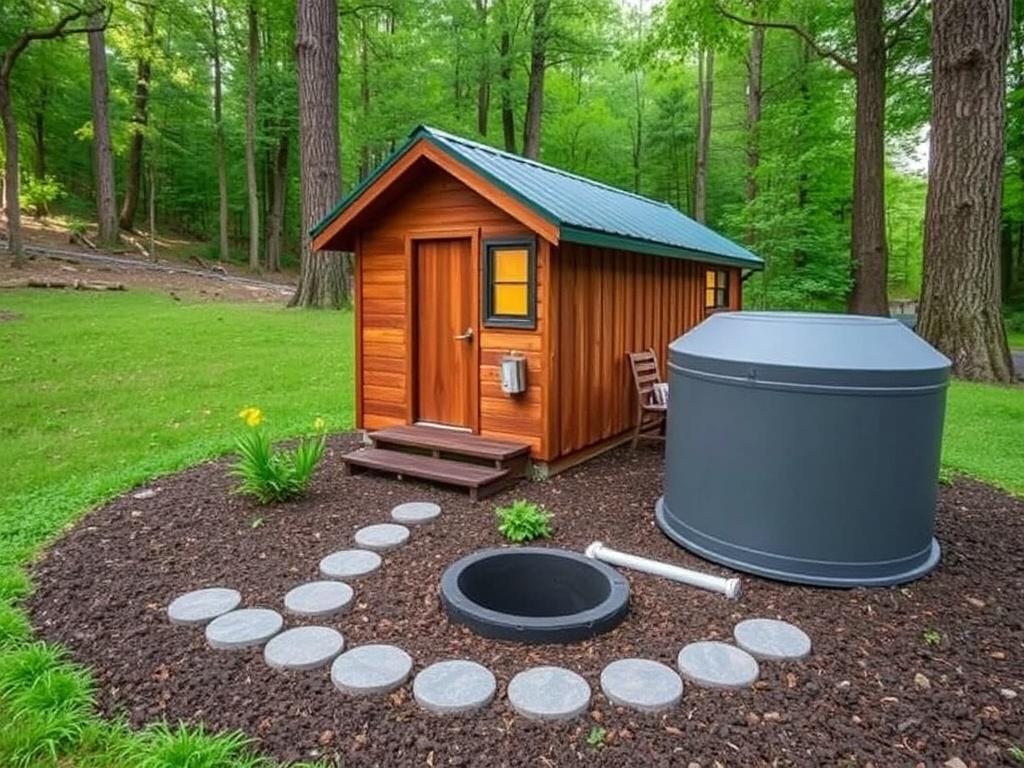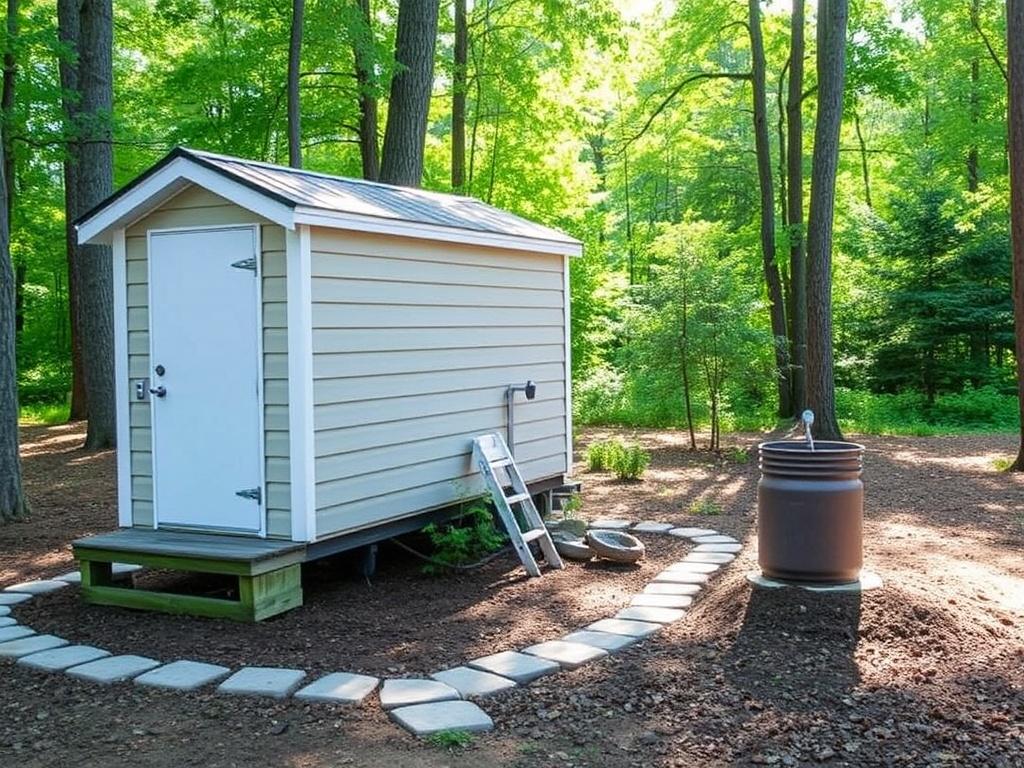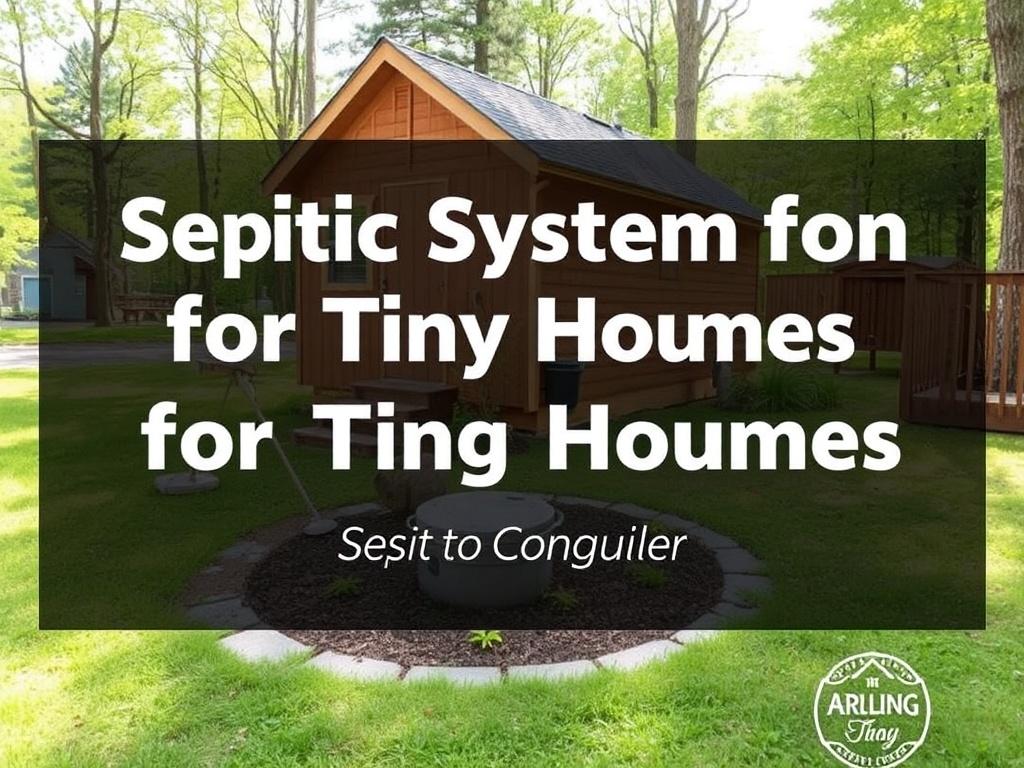Living in a tiny home comes with many exciting benefits—lower costs, minimal maintenance, and an eco-friendly lifestyle. But one of the biggest challenges for tiny house owners is figuring out how to handle wastewater management effectively. When it comes to septic systems for tiny homes, there are some unique factors to consider because these smaller dwellings don’t always fit traditional septic system models. Whether you’re building your own tiny house or moving into one, understanding the septic system options and requirements will make your life much easier and ensure your home is comfortable and compliant with local regulations.
Septic systems for tiny homes need to be designed carefully because of the limited space and different water usage compared to conventional houses. A traditional septic system involves a large underground tank where wastewater is separated and treated before it percolates into the soil. For tiny homes, though, the scale and setup can be quite different. Owners need to consider not only tank size and placement but also soil conditions, local laws, and water conservation strategies to avoid costly repairs or environmental problems down the line. In this article, we will break down all these elements and guide you step-by-step in making the best septic system choices for your tiny home.
- Understanding How Septic Systems Work
- Key Considerations for Septic Systems in Tiny Homes
- 1. Water Usage and Wastewater Volume
- 2. Septic Tank Size and Material
- 3. Location and Soil Conditions
- 4. Local Regulations and Permits
- Types of Septic Systems Suitable for Tiny Homes
- 1. Conventional Septic Systems
- 2. Mound Septic Systems
- 3. Aerobic Treatment Units (ATUs)
- 4. Composting Toilets and Gray Water Systems
- Installation Tips for Tiny Home Septic Systems
- Maintaining Your Tiny Home Septic System
- Cost Considerations for Septic Systems in Tiny Homes
- Conclusion
Understanding How Septic Systems Work
Before diving into specific septic system options for tiny homes, it’s useful to understand the basic components and functions of a septic system. A typical septic system consists of three main parts: the septic tank, the drain field (also called the leach field), and the soil beneath the drain field. Wastewater from your home flows into the septic tank, where solids settle at the bottom and scum forms on the top. The clarified liquid in the middle then moves to the drain field, where microbes in the soil naturally break down harmful pathogens and nutrients.
Here’s a quick breakdown of how the system works:
| Component | Function |
|---|---|
| Septic Tank | Separates solids and liquid waste, starting the treatment process |
| Drain Field | Distributes the liquid waste into the soil for further filtration |
| Soil | Provides the final treatment as microbes break down organic material |
For tiny homes, the septic system still performs these tasks, but on a smaller scale and sometimes with alternative designs to fit specific needs.
Key Considerations for Septic Systems in Tiny Homes

When choosing a septic system for tiny homes, you will need to take several important factors into account to ensure your system is efficient, safe, and long-lasting. These considerations range from the size of your home and water usage to property location and local septic system regulations.
1. Water Usage and Wastewater Volume
Tiny homes typically use less water compared to traditional houses since they are smaller and often encourage minimalism and conservation. However, this reduced water usage means your septic system must be able to handle smaller liquid volumes without damaging the system’s balance. Some systems designed for conventional homes may not work well if there isn’t enough water flow to push wastewater through properly.
You’ll want to calculate your average daily water usage, considering factors such as:
- Number of occupants
- Type of water appliances (low-flow toilets, showers, and faucets)
- Water recycling or gray water systems in place
For most tiny homes, average daily water use might be between 20 to 50 gallons per person, which is significantly less than the 70-100 gallons typical for conventional houses. This directly affects the size and design of your septic system.
2. Septic Tank Size and Material
Traditional septic tanks are often sized according to the number of bedrooms and expected water use. For tiny homes, you don’t necessarily match conventional recommendations because of the smaller occupancy and reduced water flow. Often, a septic tank sized between 500 to 1,000 gallons is sufficient for a tiny home, but you should always check with local health departments or septic professionals to confirm.
In terms of material, septic tanks come in:
- Concrete – durable and heavy but may be harder to install in remote areas
- Plastic – lightweight and easier to transport, good for mobile tiny homes
- Fiberglass – resistant to corrosion and lightweight but can crack under heavy weight
Choosing the right material will depend on your site conditions, transportation feasibility, and the longevity you expect from your system.
3. Location and Soil Conditions
The success of any septic system heavily depends on the soil’s ability to naturally filter and treat wastewater. When planning your septic system for tiny homes, a soil test—called a percolation (perc) test—is usually required. This test checks how quickly water drains through the soil.
Ideal soil for a septic drain field:
- Has good drainage but retains enough moisture
- Is not too sandy or rocky, as this may prevent proper filtration
- Doesn’t have a high water table, which risks contamination
Poor soil conditions may require alternative septic solutions, such as raised drain fields, mound systems, or even advanced treatment systems designed for small volumes.
4. Local Regulations and Permits
One of the most crucial steps is understanding the regulations that surround septic systems in your area. These rules vary widely from place to place, especially for tiny homes since they often blur the lines between RVs, manufactured homes, and permanent residences.
Contact your local county health department or building authority to learn:
- Minimum and maximum septic system sizes
- Septic system installation permits and inspections required
- Restrictions based on property size, well location, and setbacks to water bodies
- Permit types useful for tiny homes, including RV septic systems if relevant
Failure to comply with local regulations can result in fines or the need to remove or replace your system, so always do your homework in advance.
Types of Septic Systems Suitable for Tiny Homes
Once you have considered water usage, tank size, soil, and regulations, it’s time to look at the types of septic systems that work well for tiny homes. There are several options available, and each has its pros and cons depending on the specific needs of your tiny house.
1. Conventional Septic Systems
Even though your home is small, conventional septic systems can work if your site has good soil and enough space for a drain field. These are typically the most affordable option and easiest to maintain. A typical conventional system includes a septic tank and a drain field where effluent disperses into the soil.
Pros:
- Simple design and easy to maintain
- Lower installation costs if soil is suitable
- Proven performance over many years
Cons:
- Requires enough land and good soil drainage
- Not suitable for sites with poor soil or high water tables
2. Mound Septic Systems
If you live on a small lot with poor soil or a high water table, a mound septic system might be a smart choice. This system pumps wastewater to a raised sand mound where it can be treated before slowly filtering into the native soil.
Pros:
- Works well on challenging soil types
- Can be used where the conventional drain field is not possible
Cons:
- Higher installation and maintenance costs
- Requires electricity for the pump
3. Aerobic Treatment Units (ATUs)
Aerobic treatment units are a more advanced option that uses oxygen to break down waste more efficiently in the tank before releasing it. These systems are smaller and often used for tiny homes or properties with limited space.
Pros:
- Highly effective wastewater treatment
- Smaller drain field requirement
- Can be designed for very small water volumes
Cons:
- More complex system with electrical components
- Requires regular maintenance
4. Composting Toilets and Gray Water Systems
Some tiny home owners go a step further by eliminating or drastically reducing their blackwater (sewage) output with composting toilets and managing gray water separately. Composting toilets convert human waste into compost using aerobic decomposition, meaning no need for a large septic tank. Meanwhile, gray water from sinks and showers can be filtered and reused for irrigation.
Pros:
- Reduces septic system size or eliminates it
- Eco-friendly and water-saving
- Can work especially well for off-grid tiny homes
Cons:
- Requires more effort and knowledge to manage
- Not suitable for all climates or preferences
Installation Tips for Tiny Home Septic Systems
Installing a septic system for a tiny home requires thoughtful planning and professional assistance to avoid problems. Here are some important tips to make the process smoother:
- Get a septic site evaluation: A professional soil test and site inspection will inform your design options and ensure you comply with regulations.
- Choose a system that fits your lifestyle: Consider how much time, money, and maintenance you want to invest.
- Work with licensed contractors: Professional installation ensures that tanks, piping, and drain fields are correctly placed and sealed.
- Consider future expansion: Plan your system to handle possible guests or additions, just in case your water use changes.
- Use water-efficient appliances: Low-flow toilets and faucets reduce system strain and extend lifespan.
Maintaining Your Tiny Home Septic System

Even with a well-designed system, maintenance is key to keeping everything running smoothly. Tiny home septic systems tend to need less frequent pumping but still require regular check-ups.
Basic maintenance steps include:
- Have your septic tank inspected and pumped regularly – typically every 3 to 5 years
- Conserve water to avoid overloading the system
- Use biodegradable, septic-safe cleaning products to protect microbes inside the tank
- Do not flush grease, medications, or non-biodegradable items down toilets or drains
- Monitor your drain field area to ensure it’s not soggy, smelly, or overgrown
By following these simple steps, you can avoid costly repairs and keep your tiny home running efficiently for years.
Cost Considerations for Septic Systems in Tiny Homes

Cost is always a major factor when deciding on a septic system. While tiny homes generally save money due to their size, septic installations can range widely in price depending on the system type, location, and complexity.
Here is a rough cost comparison:
| Septic System Type | Estimated Cost Range | Notes |
|---|---|---|
| Conventional System | $3,000 – $7,000 | Lowest cost, requires good soil and space |
| Mound System | $10,000 – $20,000 | Higher cost due to added materials and pump |
| Aerobic Treatment Unit | $5,000 – $15,000 | More expensive but smaller footprint |
| Composting Toilet + Gray Water Systems | $1,000 – $5,000 | Varies widely, can reduce septic needs |
Remember, these are just estimates and local prices vary depending on labor, permits, and soil conditions. It’s smart to get multiple quotes and factor in ongoing maintenance costs as well.
Conclusion
Designing and installing a septic system for tiny homes is a crucial step that requires careful thought and planning. Because tiny homes use less water and often have unique placement conditions, their septic systems cannot simply be scaled-down versions of conventional setups—you need to consider water usage, tank size, soil type, local regulations, and maintenance needs. Conventional septic systems are possible when soil and space are adequate, but alternative options like mound systems, aerobic treatment units, or composting toilets might be better for challenging sites or off-grid living. By understanding these options and working with professionals, tiny home owners can enjoy the benefits of a fully functioning septic system without compromising the durability, environmental friendliness, or livability of their homes. With the right system, your tiny home’s septic solution can be both efficient and environmentally responsible for years to come.
Помогла вам статья?






